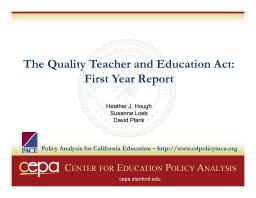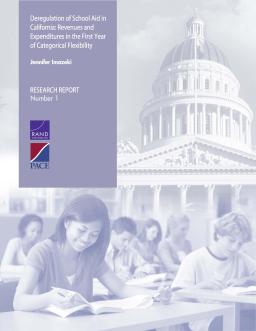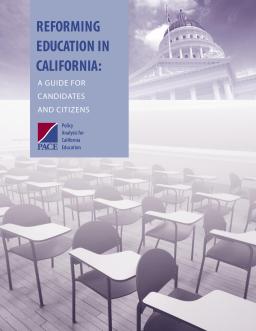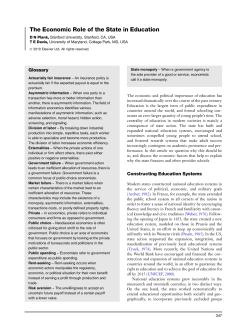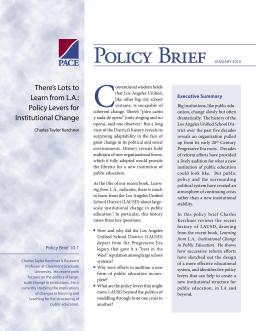First Year Report
Published
Summary
The Quality Teacher and Education Act (QTEA) was passed in 2008 in San Francisco, authorizing $198 per taxable property to be collected by the SFUSD for 20 years. CEPA and PACE collaborated with the SFUSD to evaluate the implementation and impact of QTEA on teacher compensation, support, and accountability. This report documents the first-year implementation of QTEA and its effects on the recruitment and retention of high-quality teachers, improvement of the teacher workforce, and removal of less effective teachers using a mixed-methods approach.
How 10 Districts Responded to Fiscal Flexibility, 2009–2010
Published
Summary
This report explores how 10 California school districts responded to the deregulation of $4.5 billion in education funding, which became entirely flexible in 2009. The study investigates how district leaders made budget decisions and what local factors influenced their responses. The research was conducted by a team of scholars from the RAND Corporation, UC Berkeley, UC Davis, and San Diego State University.
Revenues and Expenditure in the First Year of Categorical Flexibility
Published
Summary
This report discusses the effects of California's partial release of categorical funds to local school boards in 2009. The increased flexibility has provided an opportunity to observe how districts respond to the policy change, but the impact is difficult to isolate as most districts have been struggling to maintain core services during a severe budget crisis. The report includes preliminary results from an ongoing study of district responses to the increased categorical flexibility.
Published
Summary
The James Irvine Foundation sponsors the Linked Learning approach as a strategy for improving California high schools' performance. PACE was asked to gather evidence on the cost of linked learning programs. The report explores how traditional high schools use their resources and how much school districts spend on their high schools to achieve current performance. It proves challenging to judge whether reform strategies like Linked Learning cost more than, less than, or the same as traditional high school programs.
California’s Quality Education Investment Act
Published
Summary
This working paper examines the use of Quality Education Investment Act (QEIA) funds, which allocated $2.6B over seven years to California's lowest-performing schools. The authors conducted a study of four Los Angeles high schools to investigate how QEIA dollars were spent in the first year, who made the decisions, and how funds were used to improve teaching and the instructional program. The study found that district officials and principals had discretion in allocating funds, consistent with recent efforts to deregulate categorical-aid programs and give local educators fiscal discretion.
A Guide for Citizens and Candidates
Published
Summary
PACE has published a policy book to support informed debates about the issues facing California education. The book includes recommendations to improve education quality, targeting resources to those who need it most, giving local schools more flexibility, and designing policies for continuous improvement. While there's no one solution to fix public education, a series of good policies can bring about fundamental reform and improve outcomes for schools and students.
Published
Summary
This article explores the reasons why education has become a central focus of modern societies and the largest public expenditure around the world. The state has built and expanded national education systems, made attending school mandatory, and linked adult success to academic performance. The article delves into the economic factors behind state financing and provision of schools.
Policy Levers for Institutional Change
Published
Summary
The Los Angeles Unified School District has undergone decades of reform, resulting in an unstable atmosphere rather than institutional stability. A recent book, "Learning from L.A.: Institutional Change in Public Education," identifies five policy levers that can create a more effective educational system and a new institutional structure for public education, both in LA and beyond.
